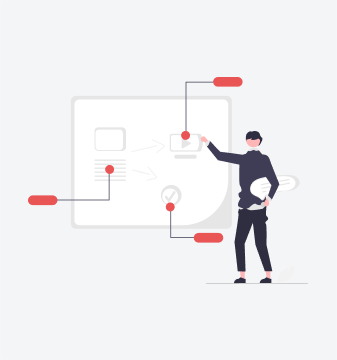In the ever-evolving world of machine learning, we encounter two main pathways: supervised and unsupervised learning. The former guides us with labeled data, providing a well-trodden path toward a known destination. However, unsupervised learning beckons us with the allure of exploration, where data becomes our map, leading us to unexpected treasures.
Today, we embark on a thrilling expedition into the untapped potential of unsupervised learning, a realm where data holds the key to unearthing hidden patterns beyond our wildest imaginations.
Understanding the Two Sides of Machine Learning: Supervised and Unsupervised Learning
Let’s quickly recap the two fundamental approaches in the machine learning realm: supervised and unsupervised learning.
Supervised Learning
This is like having a teacher guide you through the learning process. The algorithm is trained on labeled data in supervised learning, where the input and corresponding output are provided. The algorithm learns to map inputs to the correct outputs by iteratively adjusting its parameters until it achieves the desired level of accuracy. Think of it as a well-guided journey with a clear destination in mind.
Unsupervised Learning
Imagine you are on an expedition with no guide or predefined route. Unsupervised learning operates similarly; it explores and analyzes the data without any labeled targets. Instead, it identifies patterns and structures within the data itself. While supervised learning seeks to find answers, unsupervised learning discovers questions. This thrilling journey into the unknown offers unparalleled opportunities for uncovering hidden insights and making groundbreaking discoveries.
The Enigma of Unsupervised Learning: A Powerful Paradigm
Picture this: You have vast raw data with no specific labels or categories. Traditional methods would have you scratching your head, wondering how to make sense of this data chaos. Enter unsupervised learning, the enigmatic hero that thrives in such an environment. Let’s take a closer look at why this paradigm is so powerful.
Finding Hidden Structures
Unsupervised learning algorithms have the uncanny ability to identify underlying structures and patterns in data that might not be apparent to the human eye. It clusters similar data points together, enabling us to recognize natural groupings and relationships that can lead to groundbreaking insights.
Discovering Anomalies
Just as a keen explorer spots peculiarities in unfamiliar terrain, unsupervised learning can unearth anomalies or outliers within data. These anomalies often carry valuable information, such as fraud detection in financial transactions or identifying potential defects in manufacturing processes.
Dimensionality Reduction
Imagine navigating a vast and complex maze. The more convoluted the paths, the harder it is to see the bigger picture. Unsupervised learning aids in dimensionality reduction, simplifying the data representation while preserving essential information. This leads to more efficient data processing, visualization, and interpretation.
Practical Examples of Unsupervised Learning

Enough theory; let’s witness the magic of unsupervised learning in action through some real-world examples.
Clustering Customer Segments
Imagine you’re a marketing wizard looking to tailor your strategies to different customer segments. Unsupervised learning can help you cluster customers based on their preferences, behaviors, and purchasing patterns. This empowers you to create personalized marketing campaigns, ultimately boosting customer satisfaction and retention.
Topic Modeling in Natural Language Processing (NLP)
Have you ever wondered how search engines group similar documents or articles together? Unsupervised learning comes to the rescue by using topic modeling algorithms like Latent Dirichlet Allocation (LDA). It automatically identifies the main topics within a vast collection of textual data, making information retrieval a breeze.
Image and Video Segmentation
In the realm of computer vision, unsupervised learning techniques like K-means clustering can be applied to segment images and videos. This aids in object recognition, scene understanding, and even autonomous vehicles’ perception systems.
Conclusion
In conclusion, unsupervised learning is a captivating frontier in the world of machine learning, offering a treasure trove of hidden insights and discoveries. By unleashing its true potential, you can conquer the challenges of unstructured data and harness the power of hidden patterns.
So, fellow explorers, let’s embark on this thrilling journey of unsupervised learning, where every data point is a clue waiting to be unraveled, and every discovery opens new doors to knowledge and innovation. Happy exploring!




